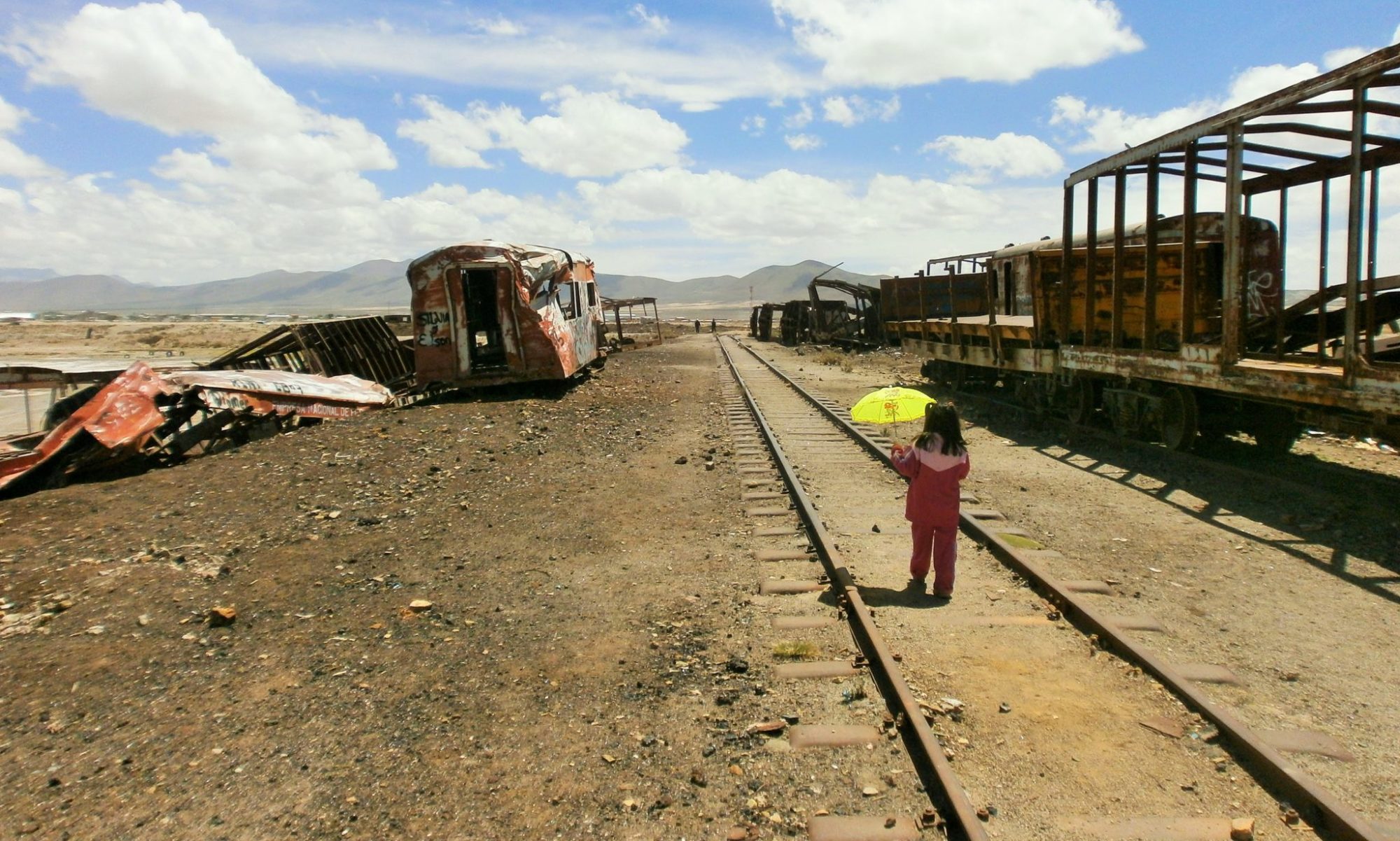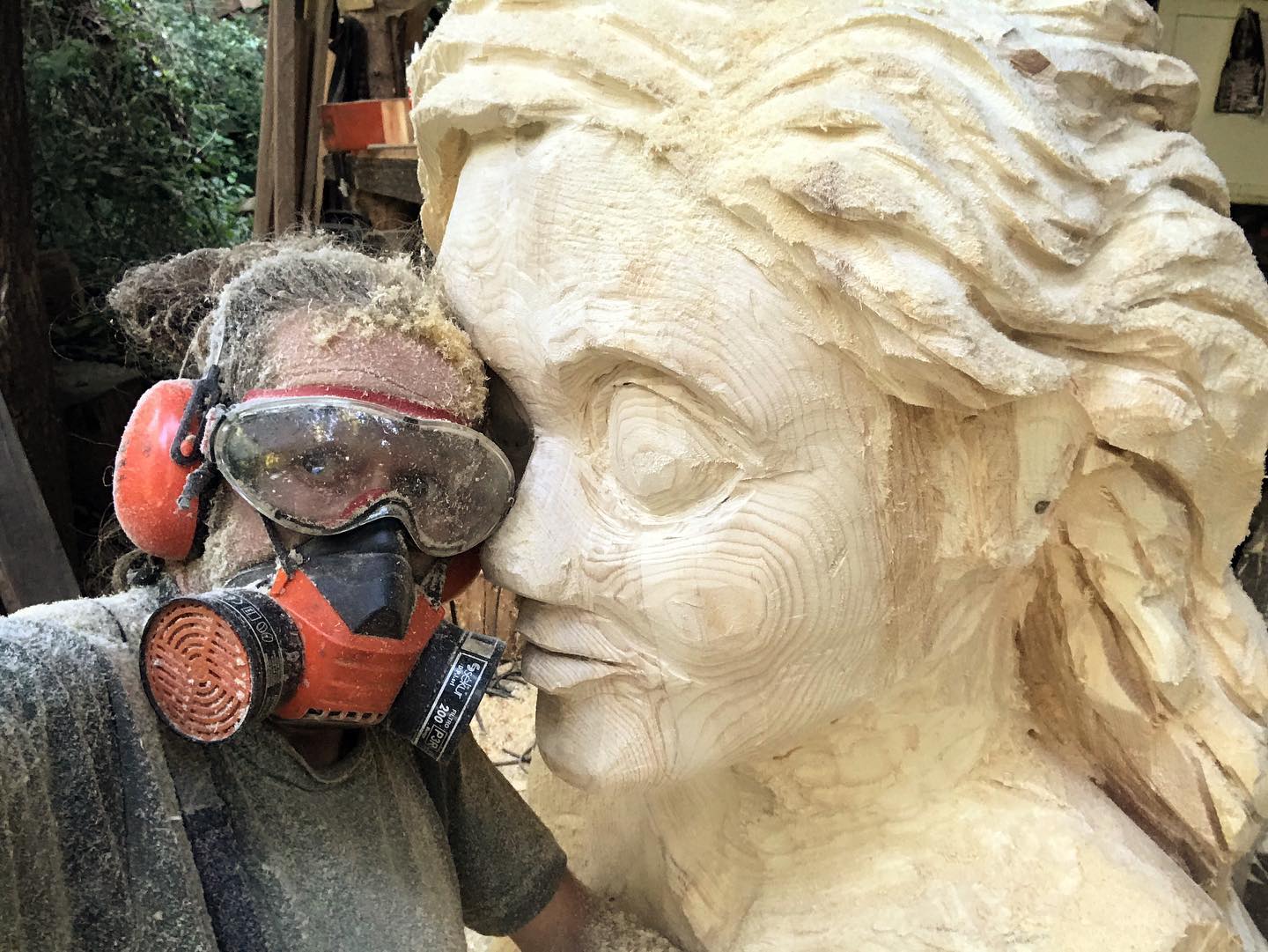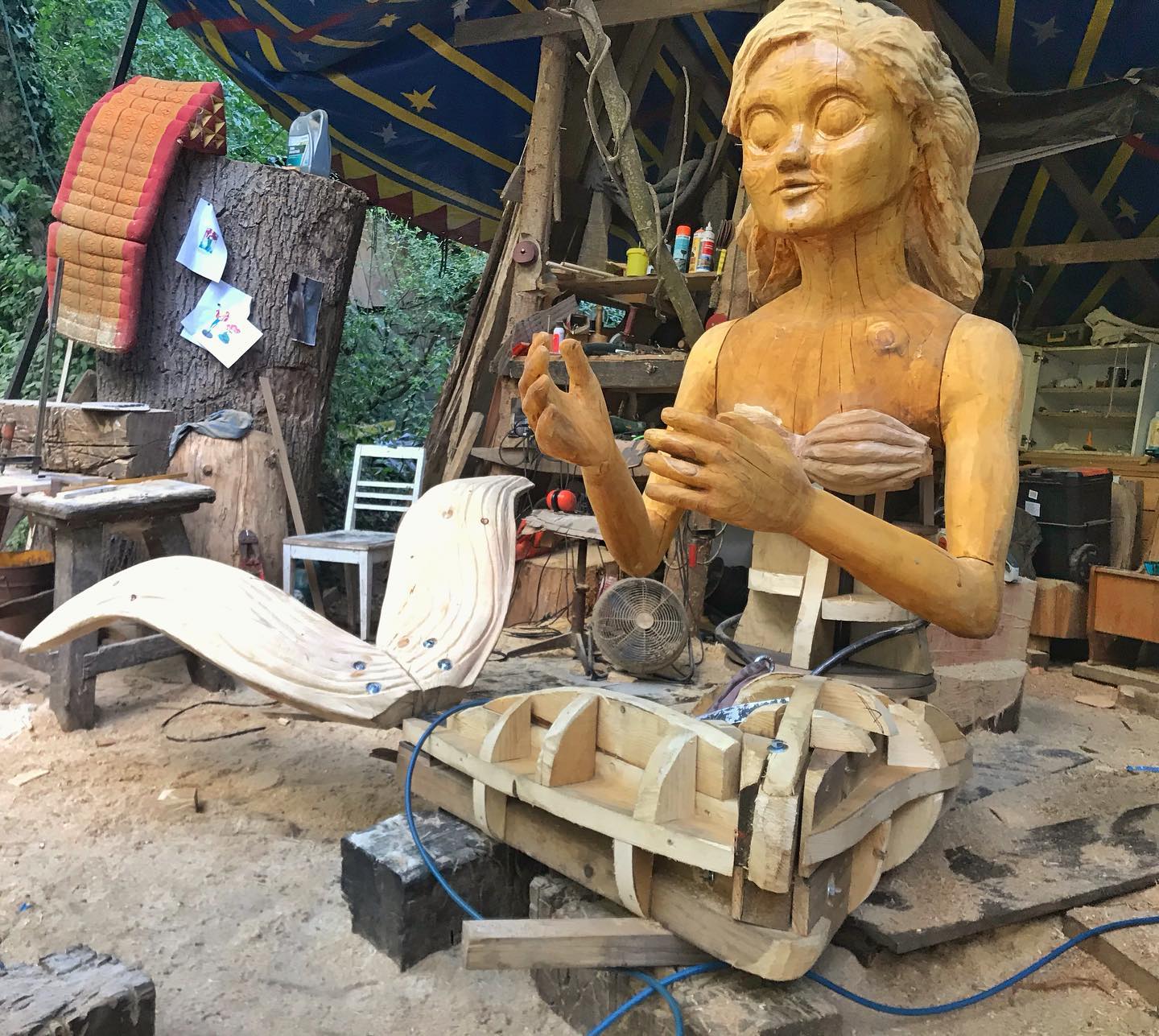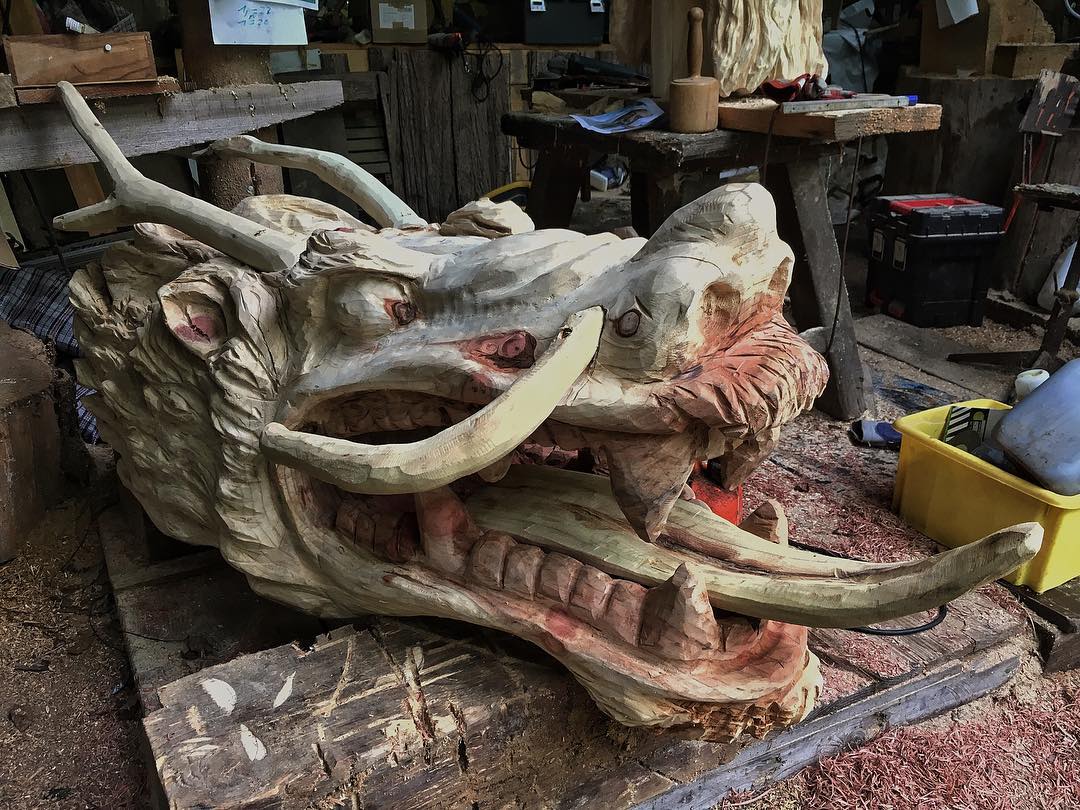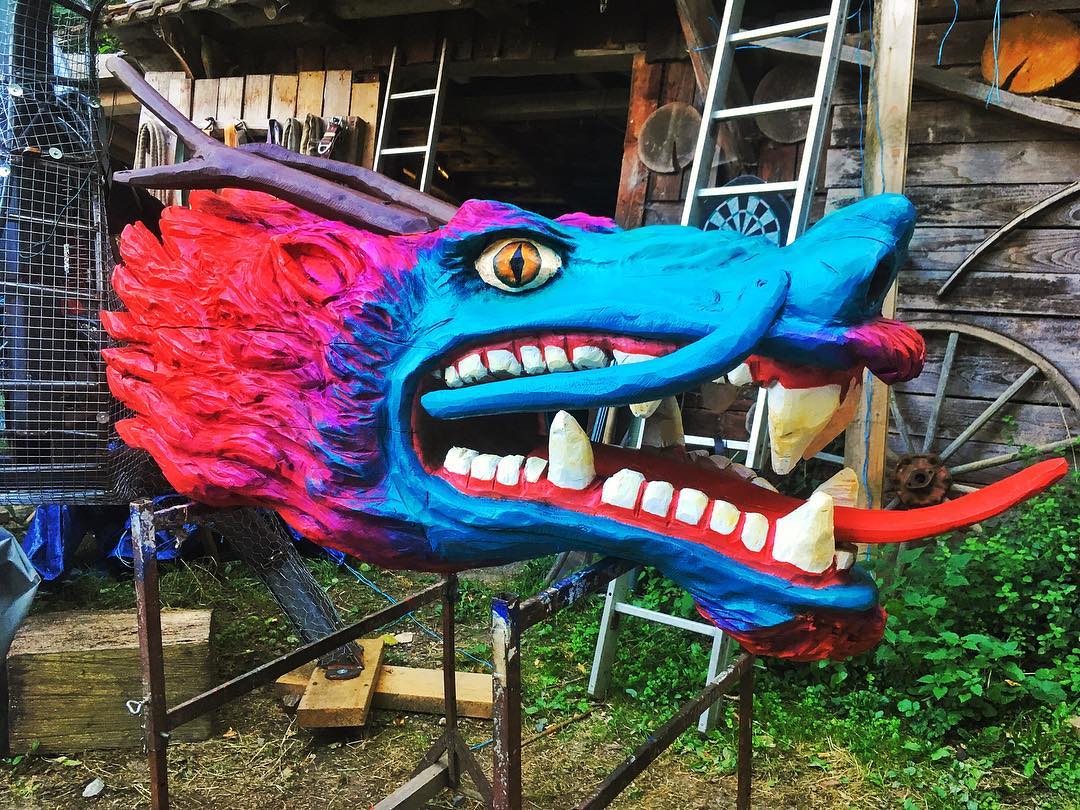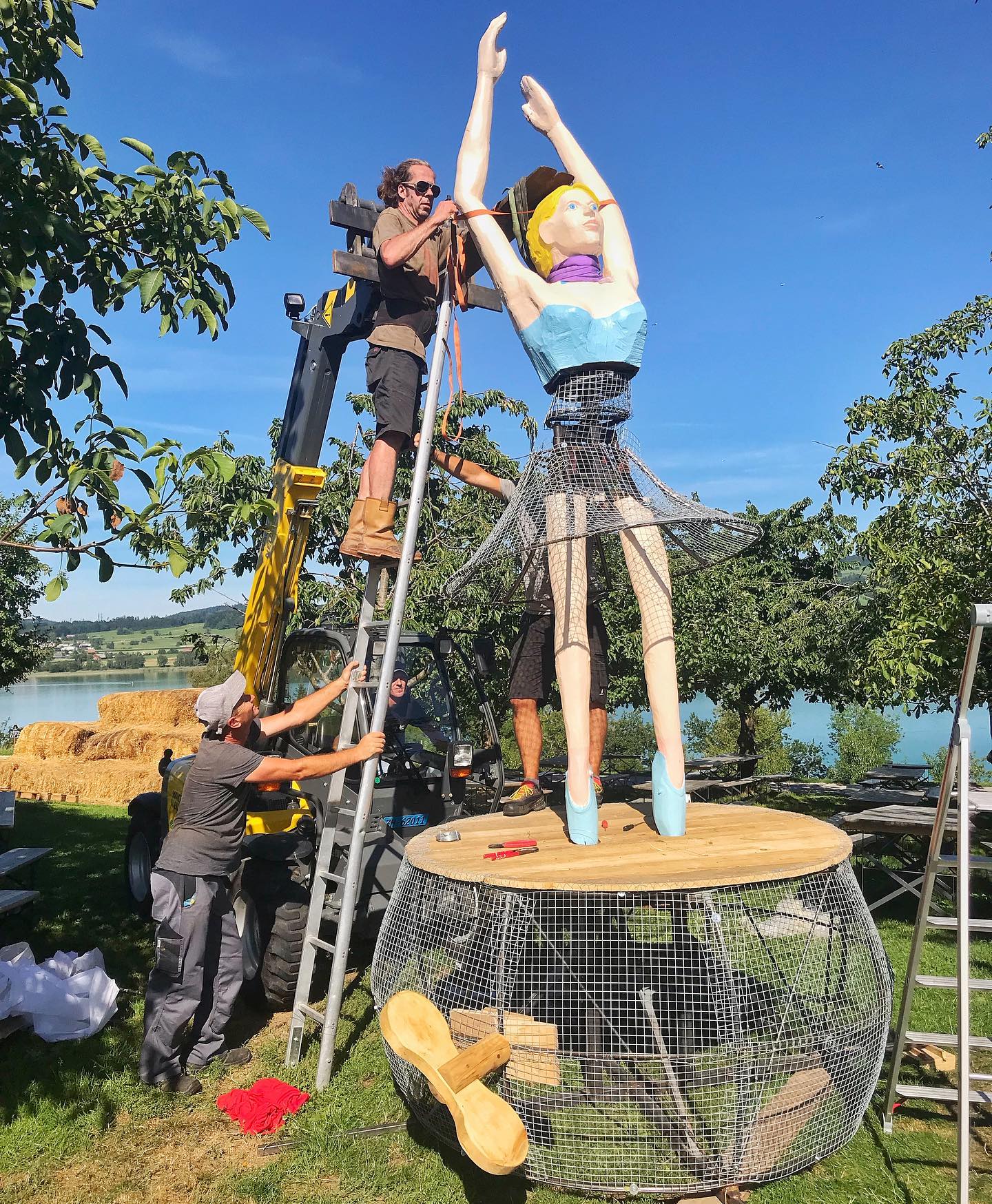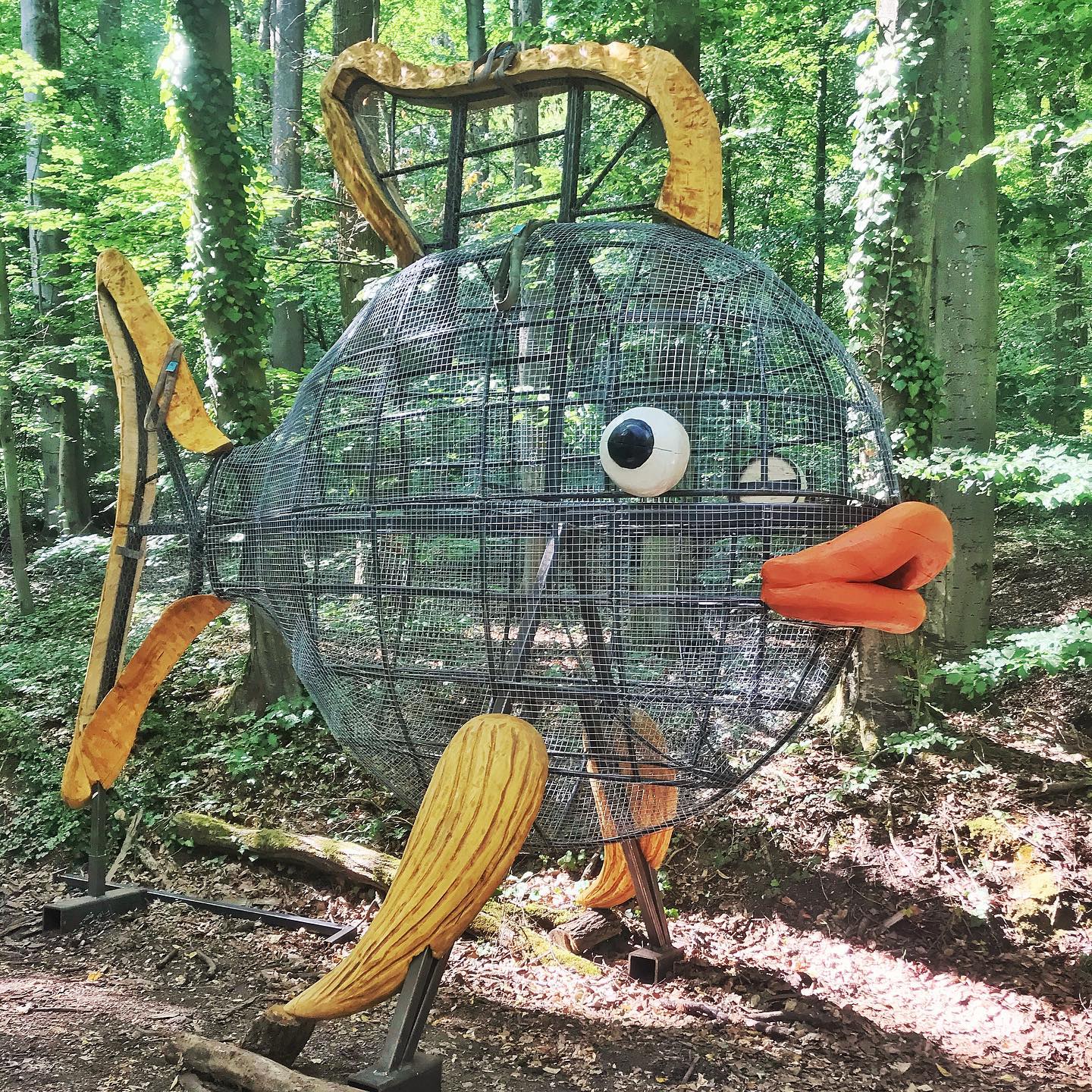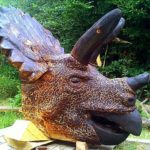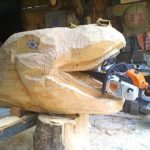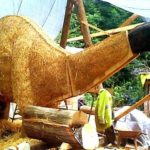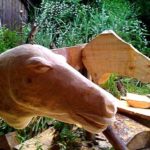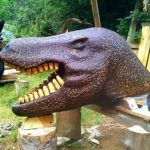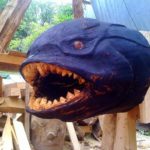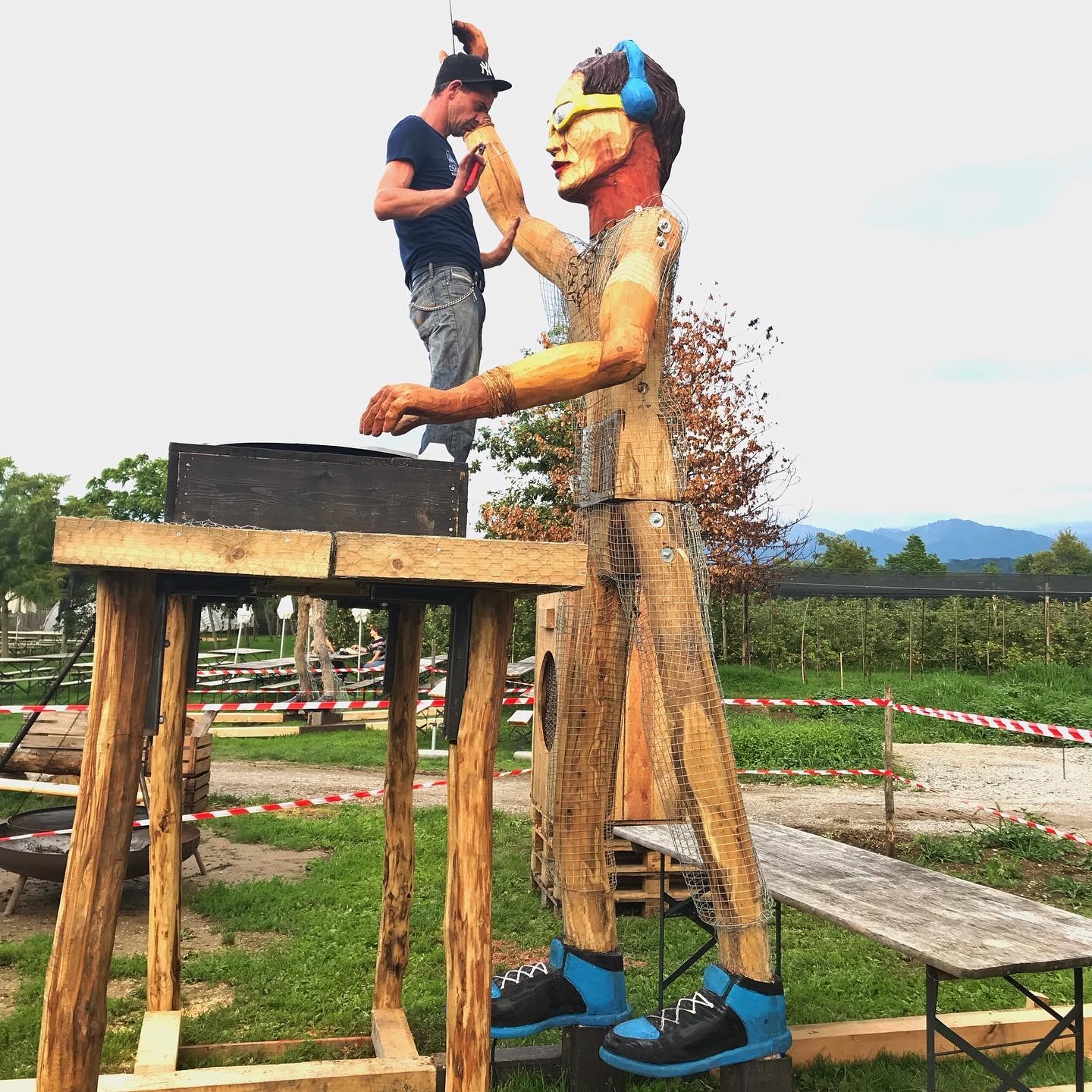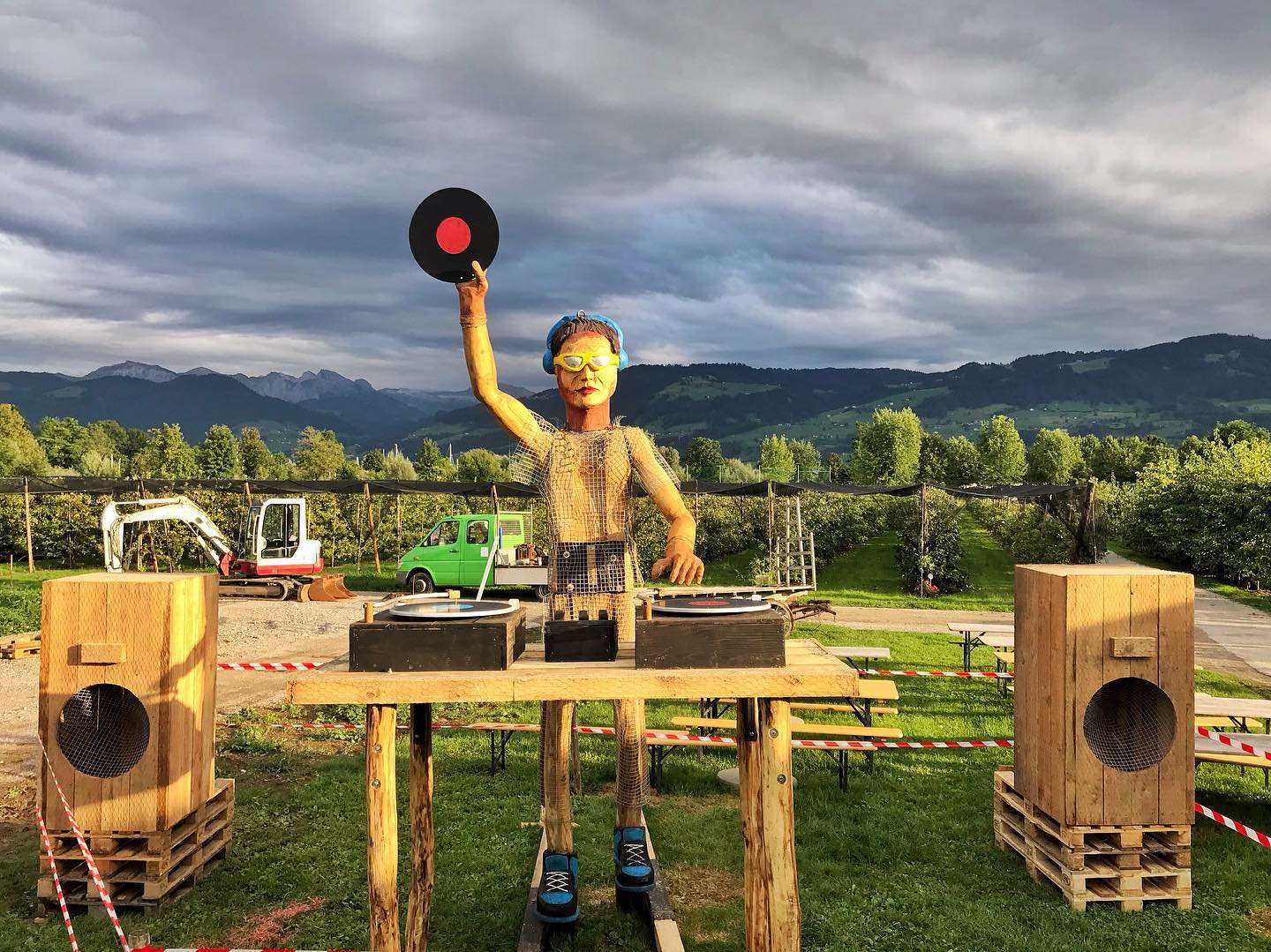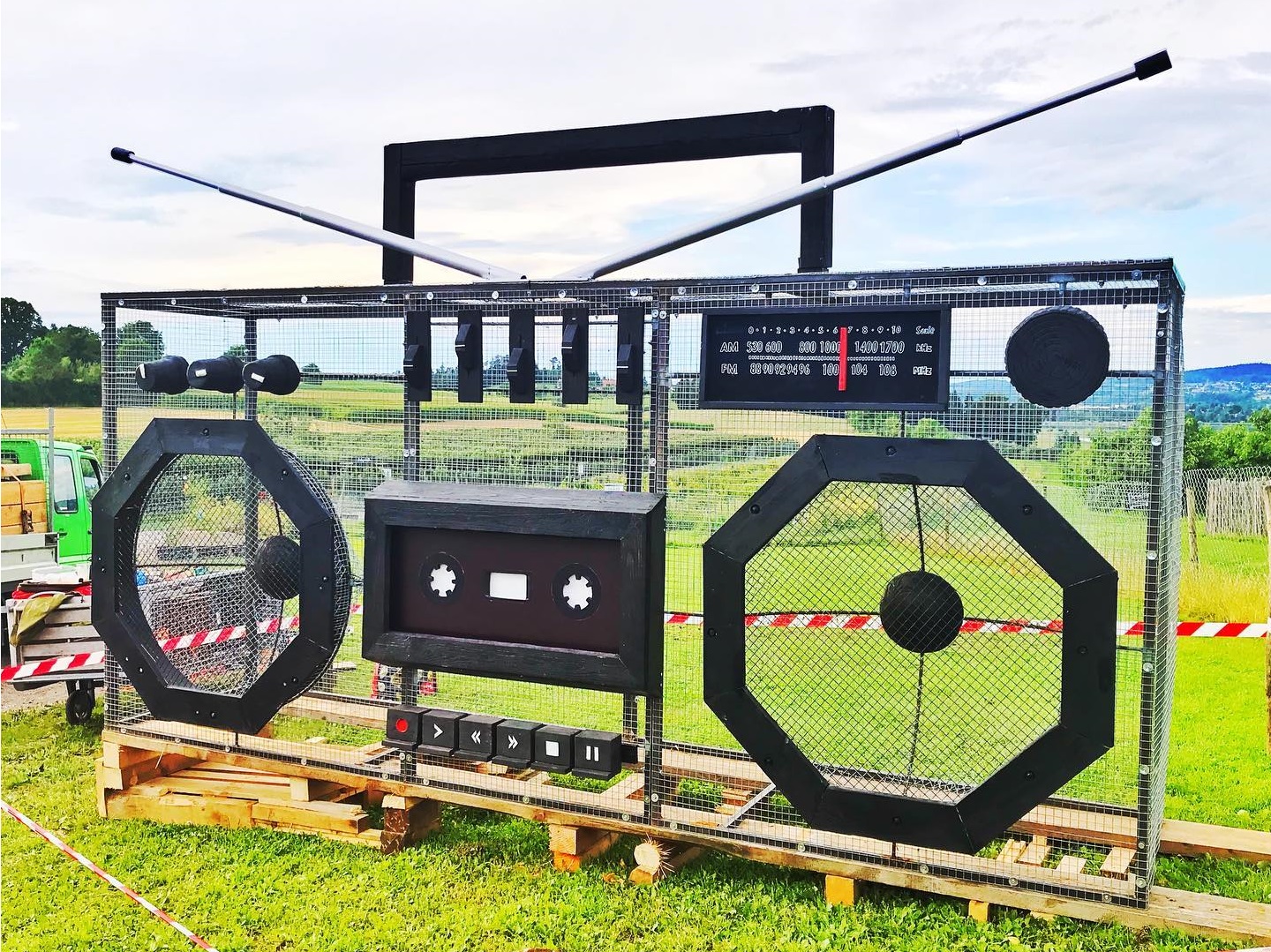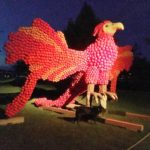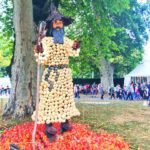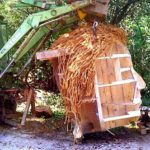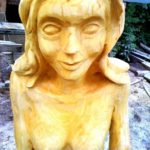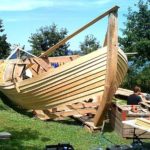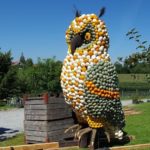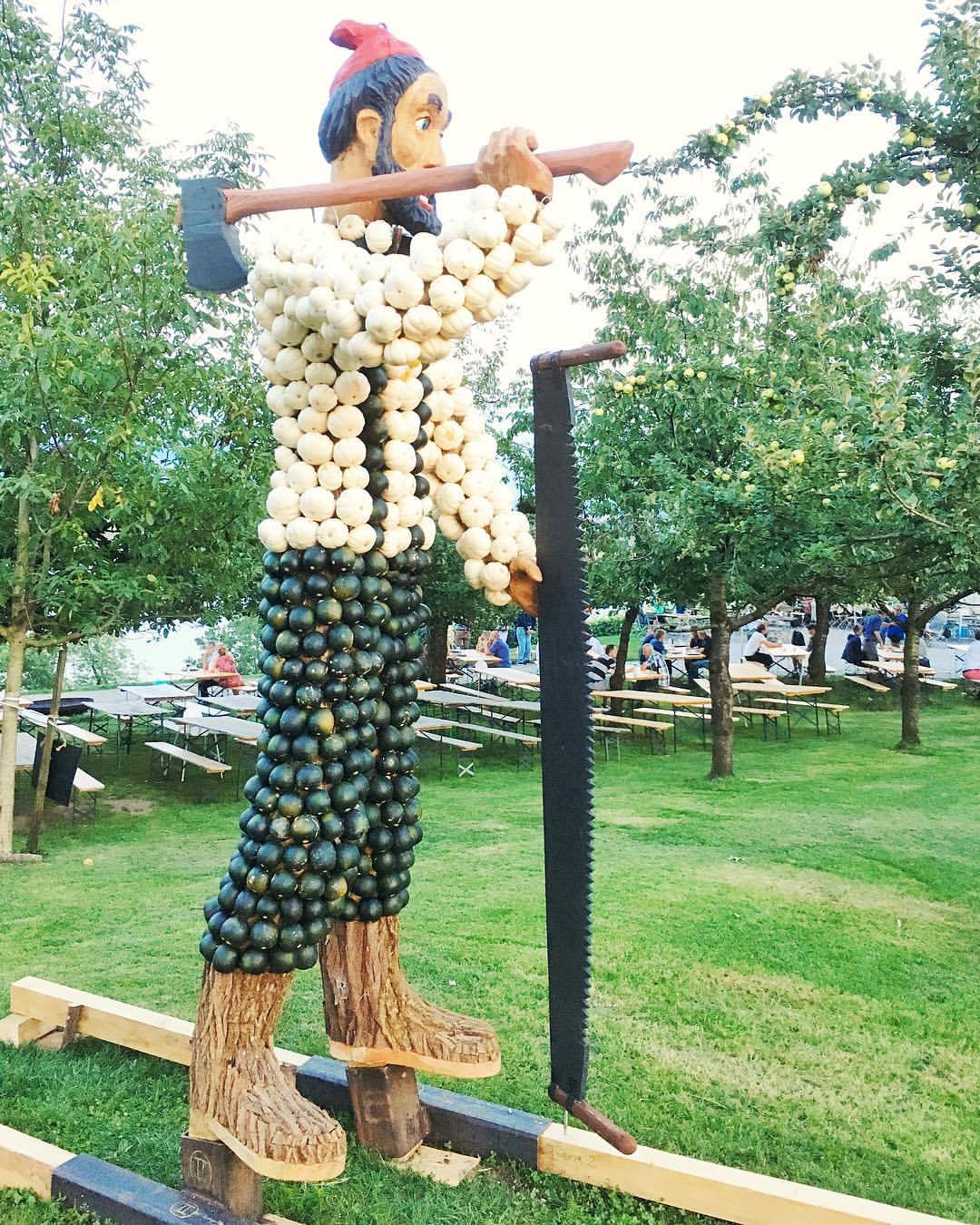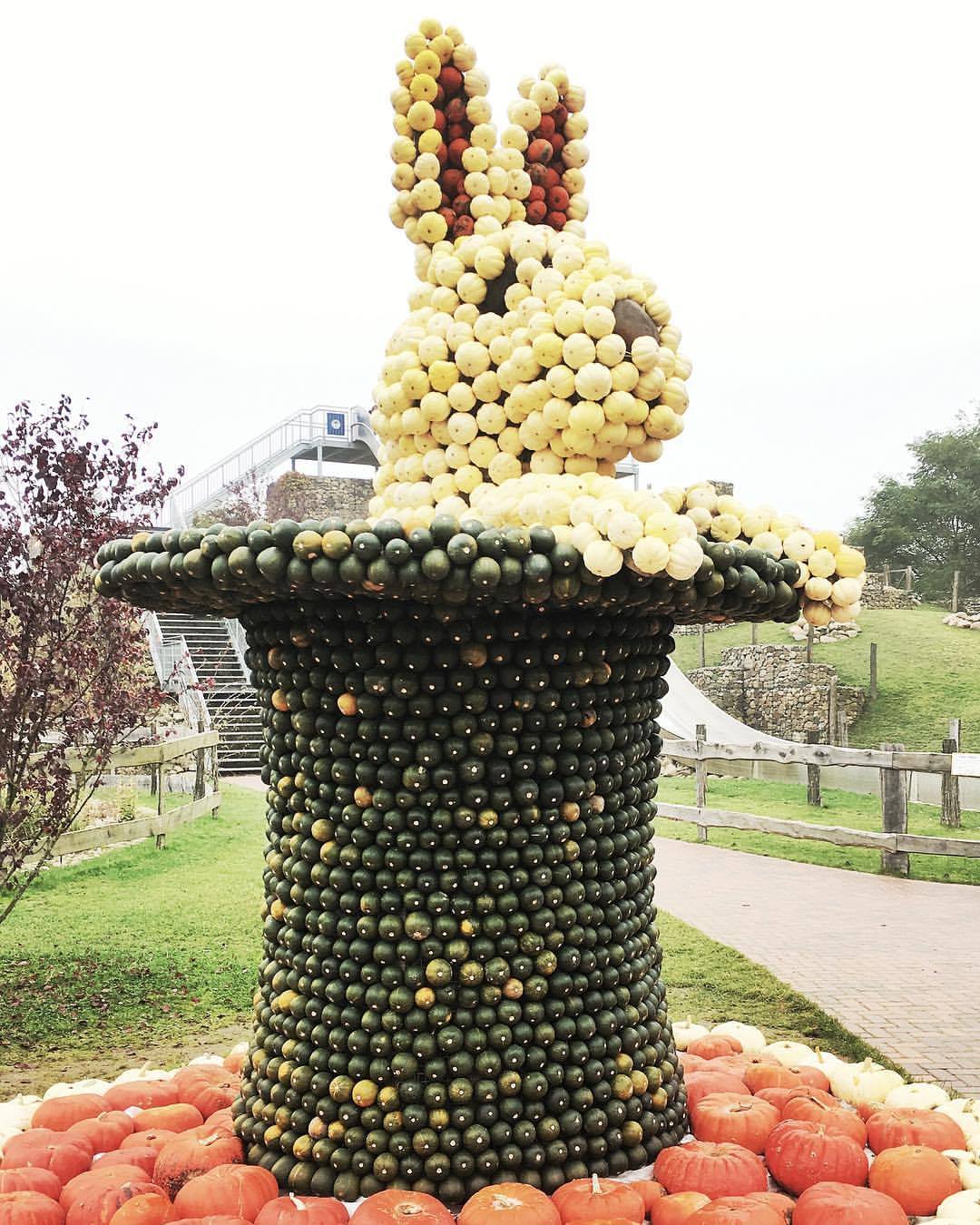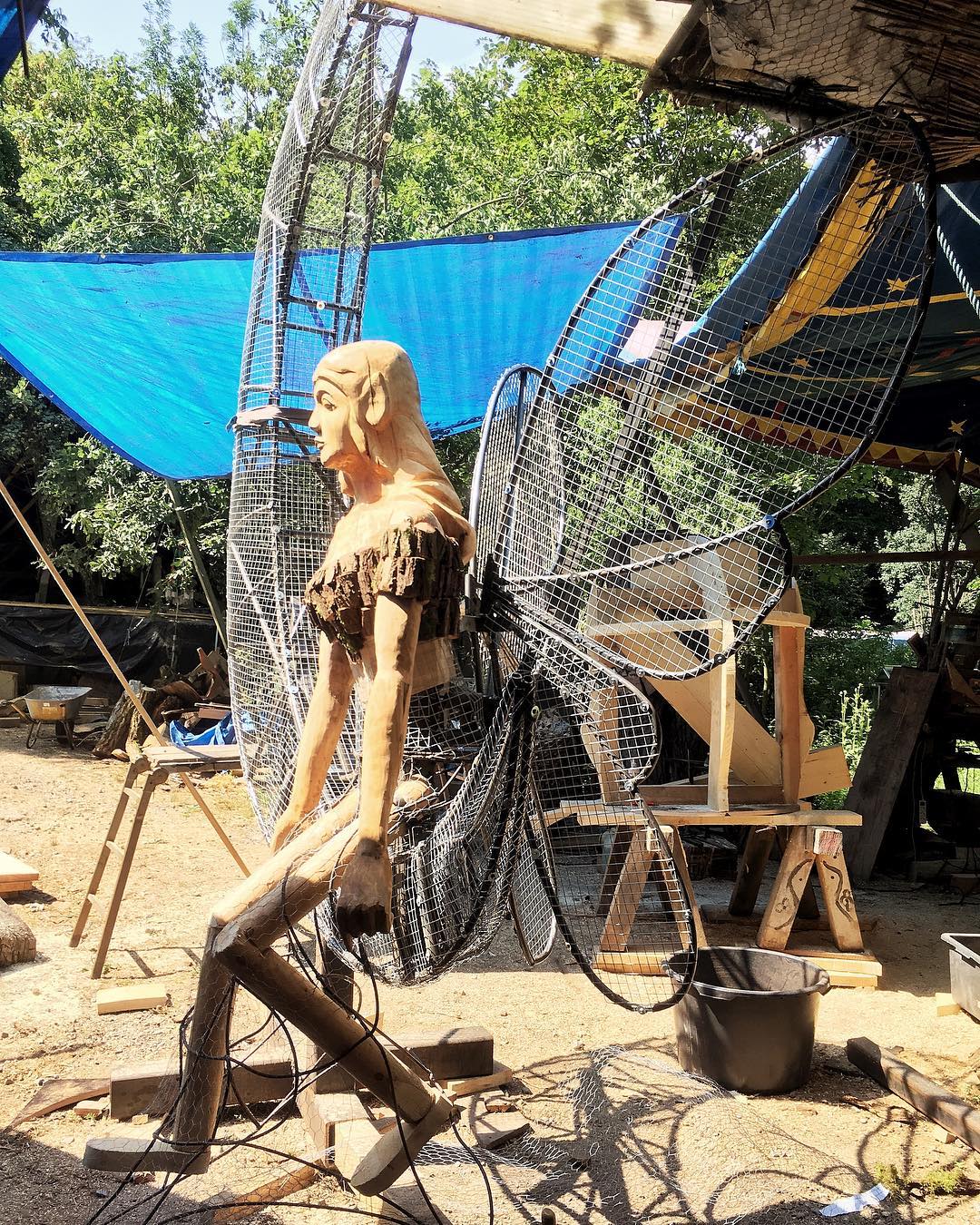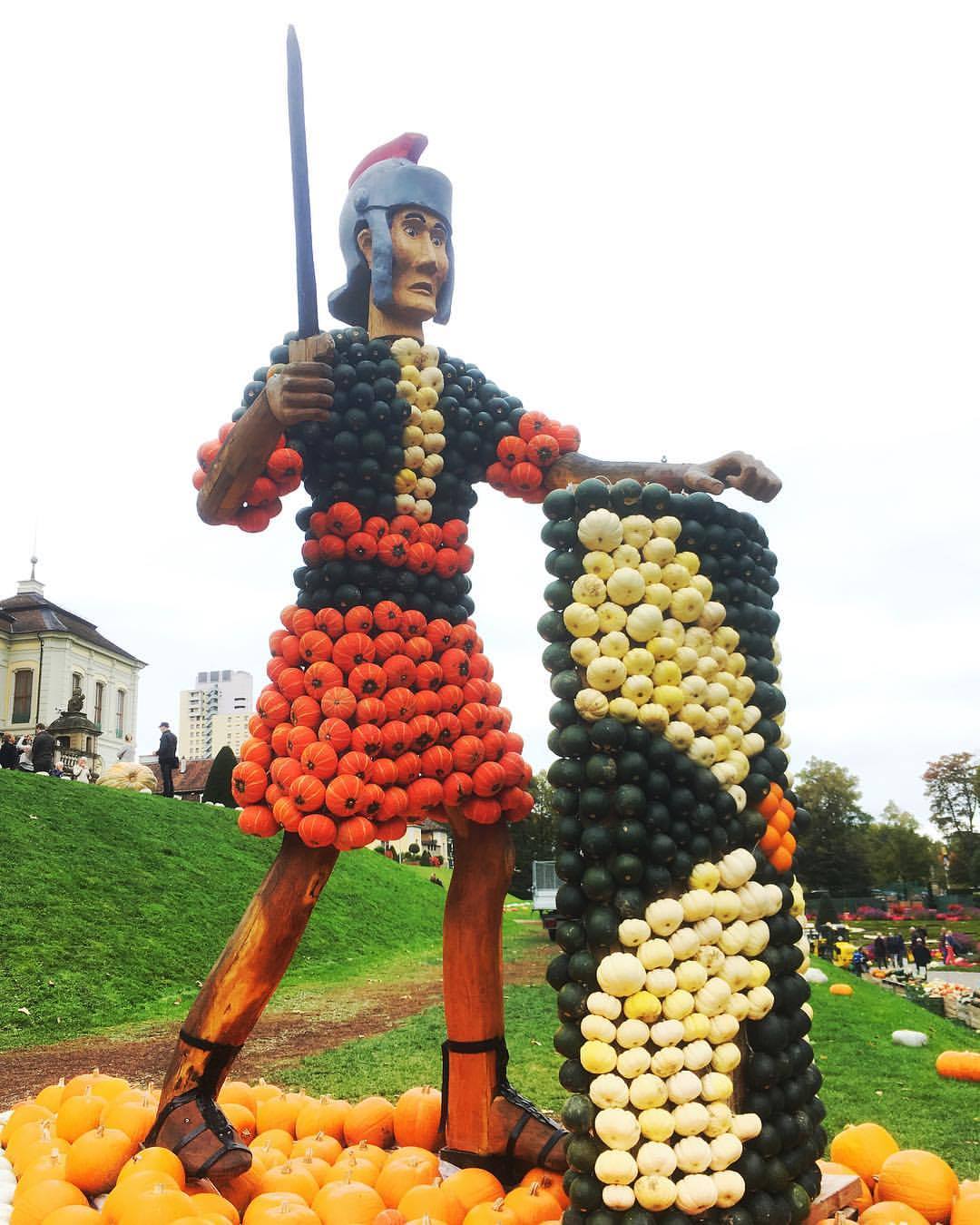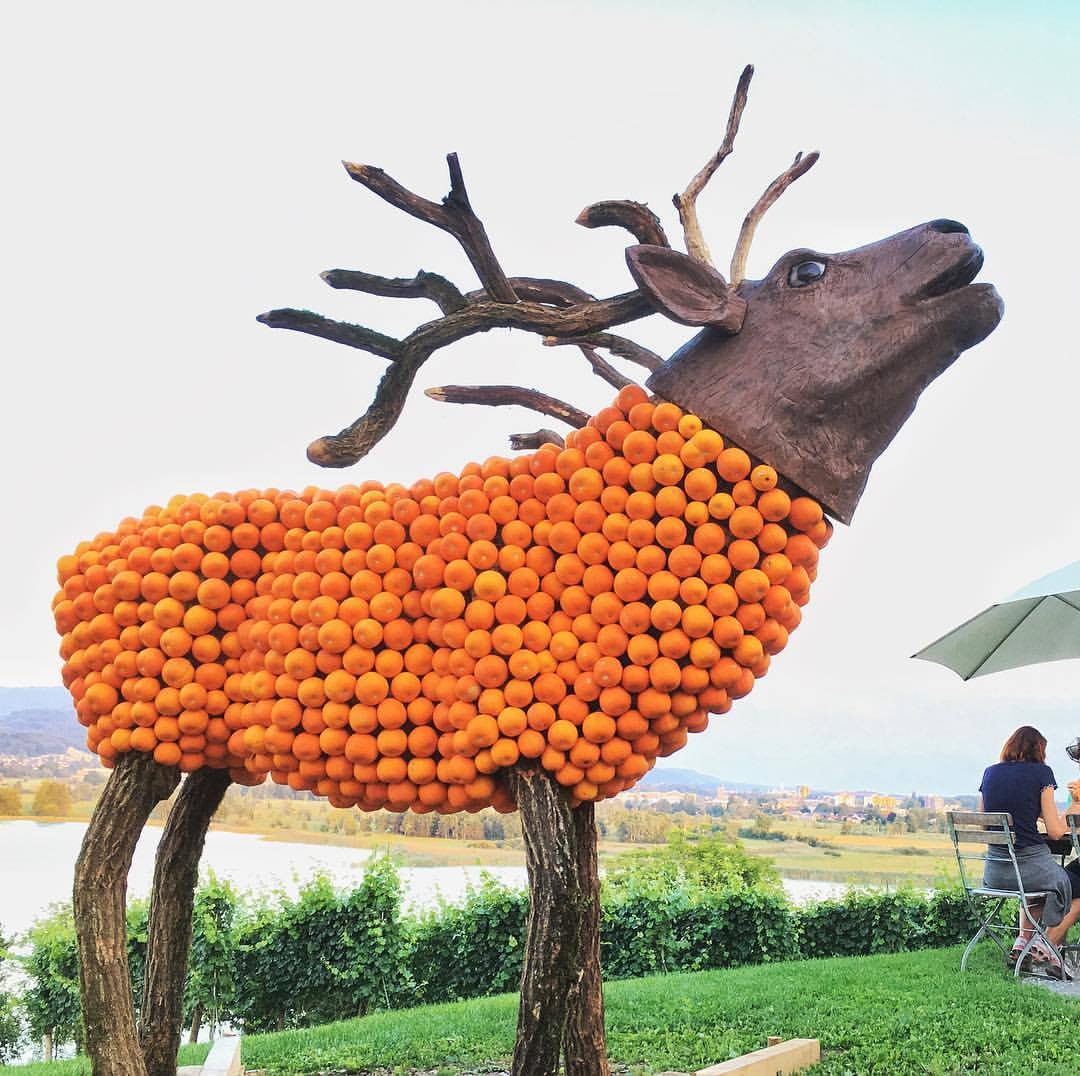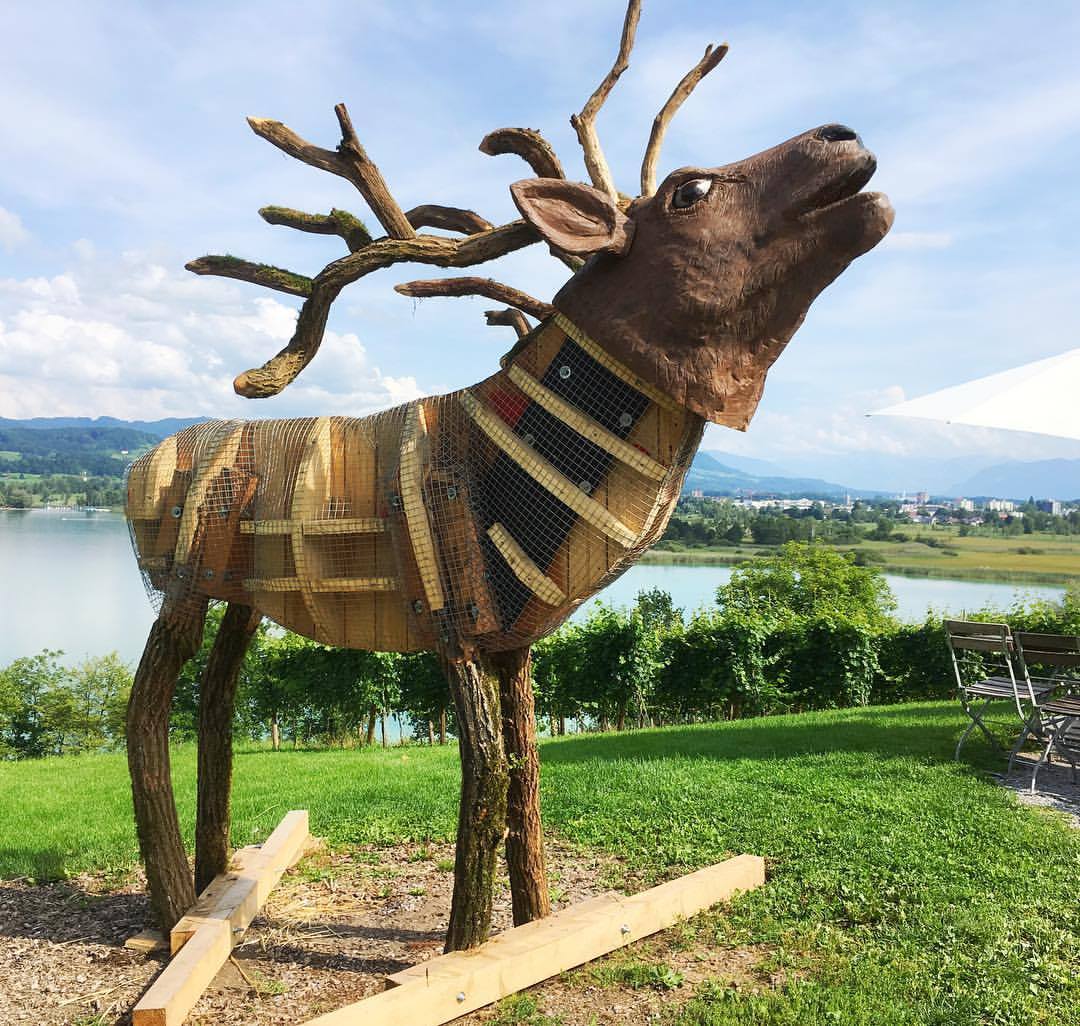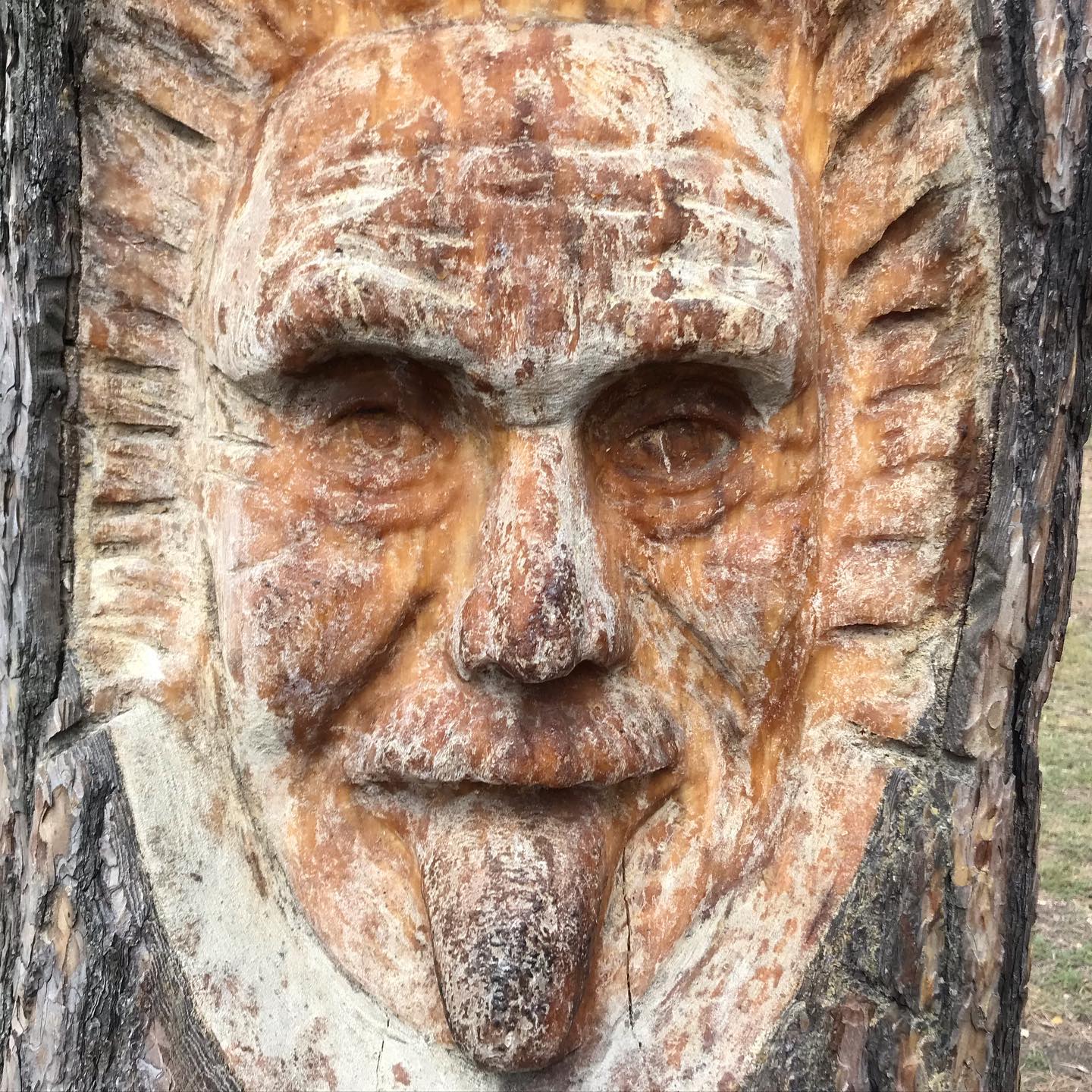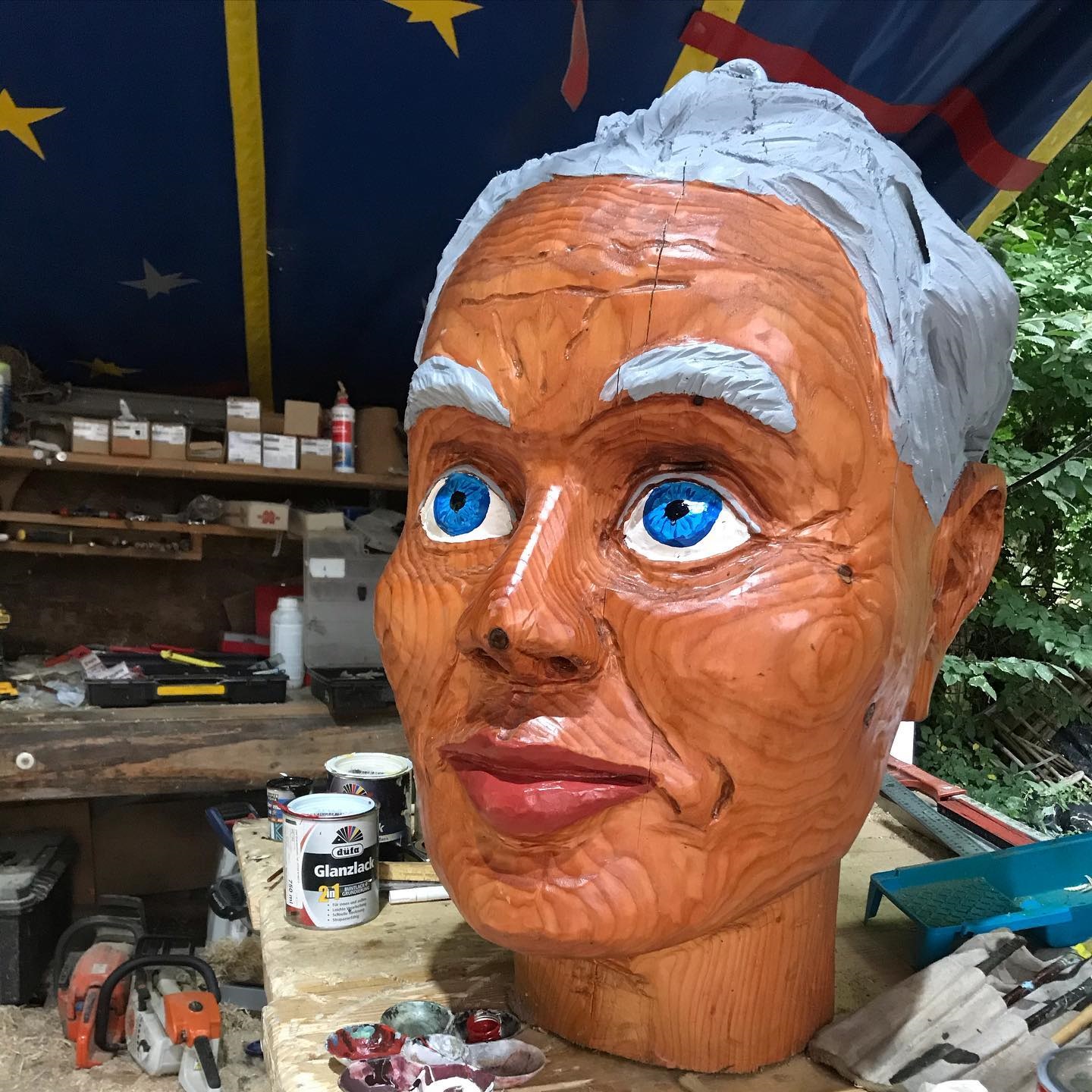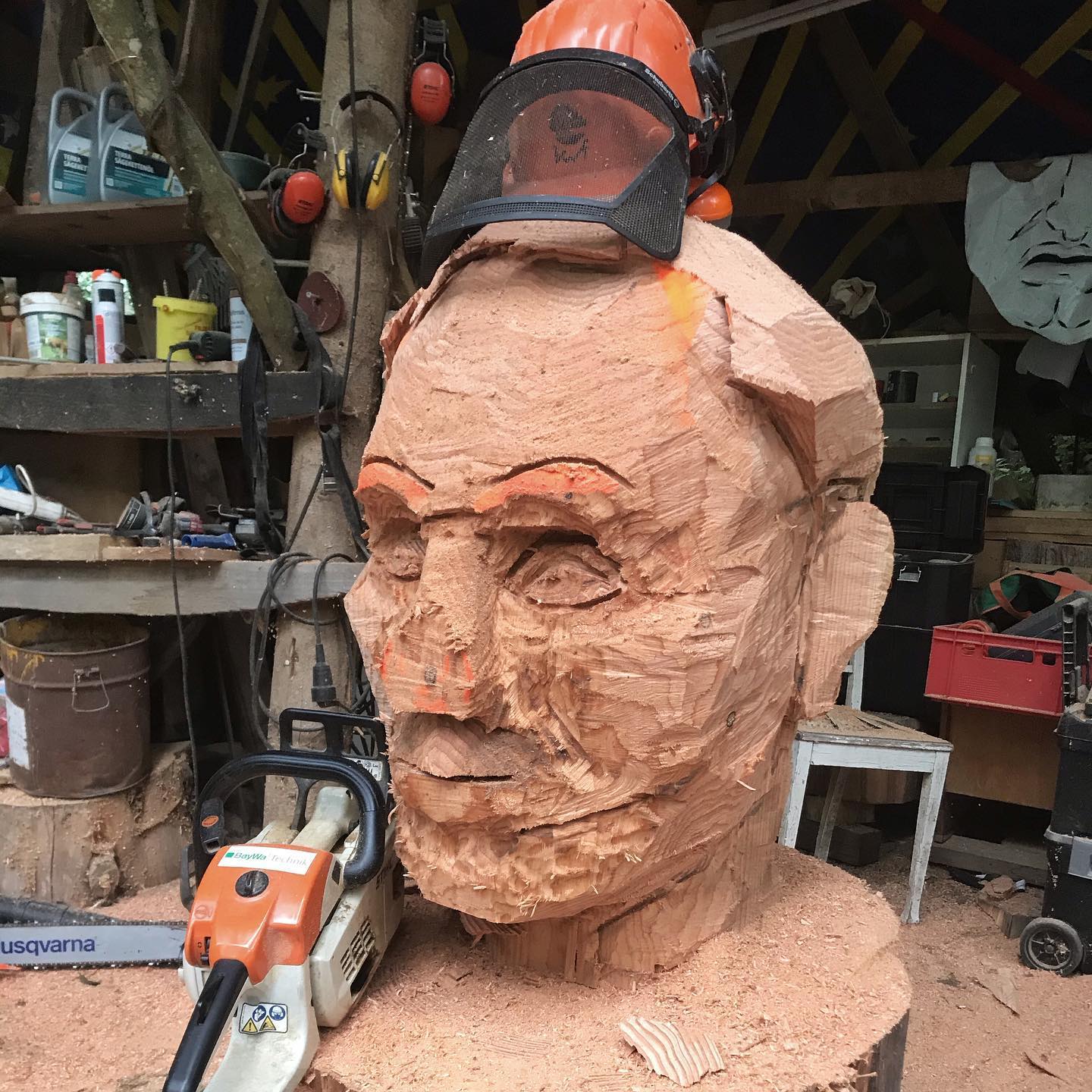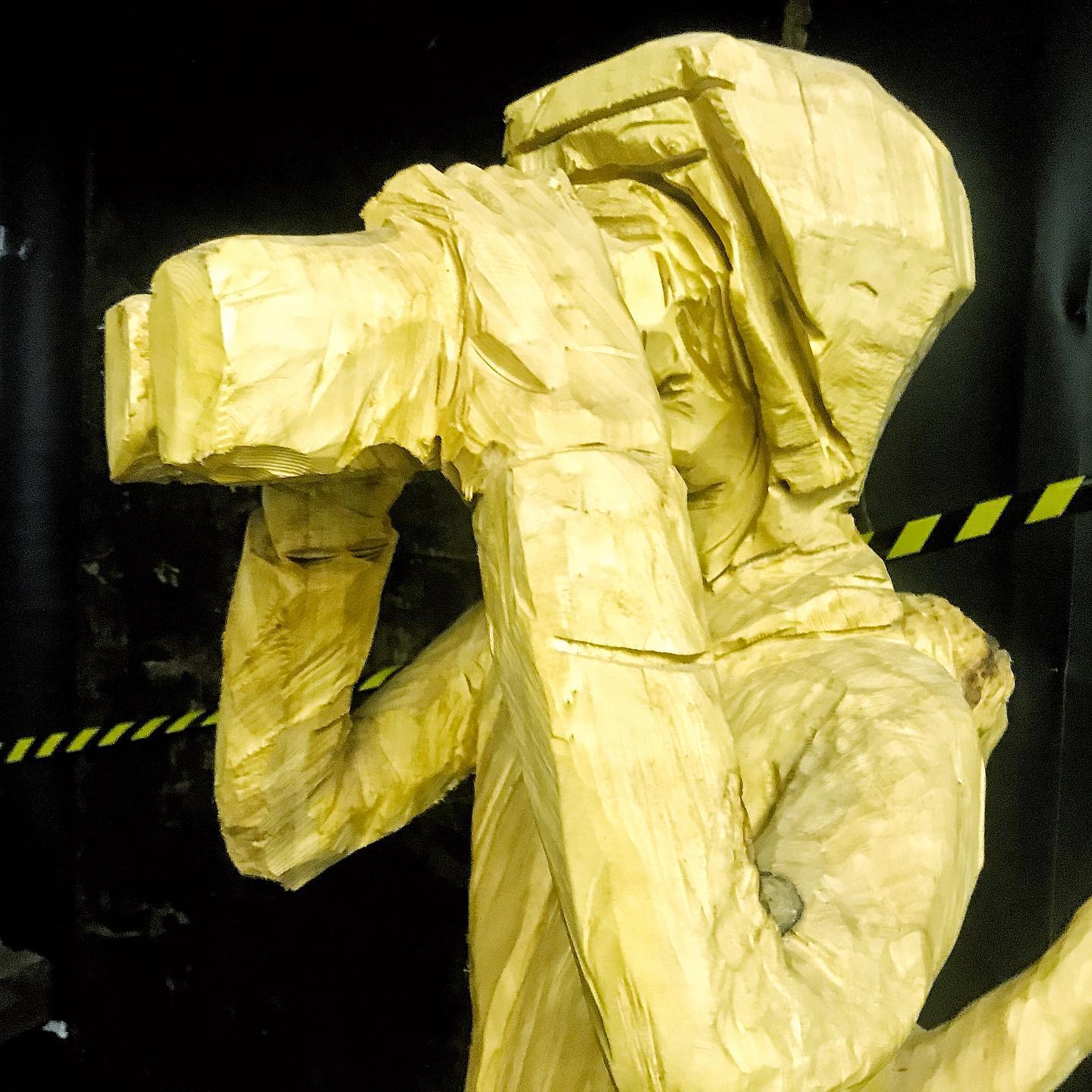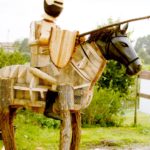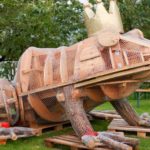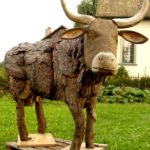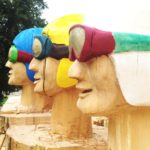The sculptor Pit Ruge designs fantastic creatures and entire wonderful worlds of wood, wire and color in his open-air workshop “Waldwerft. ” For the huge and famous pumpkin exhibitions, which have been taking place for over twenty years now throughout Germany, he and a team of artists fabricate the complete thematic scenarios including figures, which are then hung with pumpkins. The creative factory also produces works of art for countless other events, exhibitions and festivals.

Pit Ruge actually lives in Berlin and works creatively there, but every year he goes to Cleebronn in southern Germany to the “Waldwerft” to build new figures, from small filigree works to meter-high structures. Pit originally came from photography, but then he was attracted to modeling and sculptural work. In general, however, he is open to experimental ideas and always tries interesting new things. The nature loving artist and alternative thinker is currently working on another project with soap bubbles and his designs also were already represented at Burning Man.

Pit still likes to take photos, he is part of the DOTS Gallery and also works as co-organizer of the Noise Lab Festival. Recently he started building up an alternative radio podcast called Teufelsberg Domecast. We already had an article about this project and in this context the meeting and the interview in Berlin took place. But Pit’s fantastic sculpture art needs a separate detailed post. Below you can listen to the podcast of the interview in German, the conversation is also written down and translated into English, peppered with insights into the art of Pit Ruge.
Are you in your workshop in Cleebronn right now?
No, I’m in my studio in Berlin at the moment. I always commute between the Waldwerft and Berlin. So I’m, so to speak, an ex-New Berliner. So I moved out of Cleebronn five years ago and now I live here in Berlin again. I usually spend three months at a time in the summer at the forest yard to work to build my sculptures. I spend the rest of my time in Berlin with some other projects and preparation.
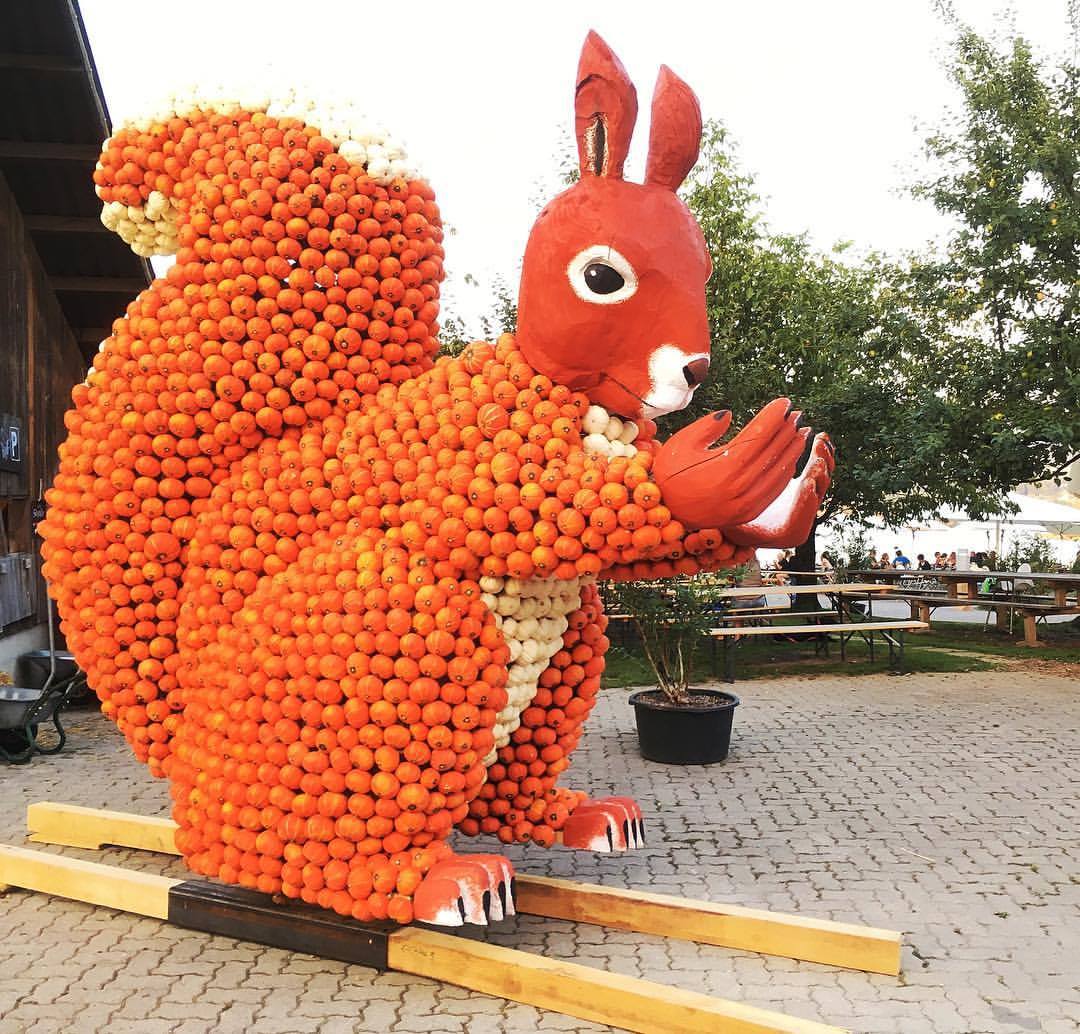
Your sculptures can then be seen at the beautiful pumpkin exhibitions, which are now held all over Germany. In Ludwigsburg is also a very interesting one in the palace park. For this you then create sculptures or entire theme worlds.
That´s right. It’s a project I’ve been working on for 20 years now, and every year I build a pumpkin exhibition on a specific theme for the organizers, who are actually two farmers from Switzerland. There are usually quite large sculptures, where we mostly work with a whole team. For this I retire from the city to the forest for around three months every year and meet up with my colleagues there. During this period we have really an intensive time with creating art and building sculptures.

How did you come to build sculptures and how did it all begin?
Yeah, that’s a funny story, because I used to live in Berlin before. That’s why I said “ex-New-Berliner”. I already lived in Berlin in the 90s and did an apprenticeship as a photographer at the Lette Verein. In 1990 I moved to Berlin and in 1997 I moved away again. When I arrived in southern Germany, where I grew up before, I happened to come to a photo job, because I took photos for a brochure about pumpkins around this time. That was for a friend farmer and there was another friend of mine who was studying marketing in the agricultural field. And he drew my attention to the fact that there are two again other farmers, young farmers from Switzerland, who are planning and organising a pumpkin exhibition in Ludwigsburg in the castle garden. And they still need some support. So I started out as a support hand in the first year and at in the beginning I just helped to set up the exhibition and found the idea and the vision pretty good. It quickly became clear that a little creative input was still missing. I then offered this missing part of art to the organizers and they accepted it. This has now resulted in a really great collaboration over the years. The whole project has also become quite successful, so there are really a lot of people watching it. So we have one million visitors per year at eight different pumpkin exhibitions. Of course, it’s crazy how this has turned out. Yes, so that’s why I still like doing this job, because every year I am involved in the creative process from the very beginning or even suggest the topics.

We always have a creative round, where we basically decide which way to go and we choose a theme every year. So I got in there in principle, because I also said, well, if we are now doing such an exhibition over many years, then you have to see the pumpkin like a suitcase and just always look for your own topics, which you can rework every year. That’s what we do. We look for an exhibition theme and then look for objects for it. At best, after our creative meeting, I have a list of 15 terms on it and then my work begins, that I basically dissolve it. We think about how to present such a term or how to build the object. So how big it should be and what it looks like. I usually work that out and then make an offer. Then I just get a contract to build the objects. This is of course very nice for me as an artist, because I can work very freely and I don’t have any kind of directors in my neck. Because we’ve been cooperating for so long, it’s really the case that trust is there. When I say it’s going to be like this, I don’t have to visualize it first. That’s why we can build the objects very intuitively and in the flow planning. This is also very helpful, because for example we build many animals, in which there should be some movement and we like to use already bent logs. For example, on the legs of a horse, so that it also works with the stability at the end. The objects are often three or four meters high and if they are then hung with pumpkins afterwards, then this is also a real weight and there are also partially 2000 pumpkins hung. So usually only apple-sized pumpkins, but that adds up. From this point of view, I am still very happy with the situation that I have as an artist here in the project.

I’ve already been to some of your pumpkin exhibitions, which are really large-scale exhibitions. Especially the one in Ludwigsburg, which is a huge area there at the castle. And you build the figures together from different elements. So you’re putting metal and wood together?
Well, that depends a little bit on the objects. All in all, I actually do a lot of sculptural work. If you imagine a figure like a unicorn or a Beethoven bust, there are of course many components that need to be carved and that’s my speciality. I usually cut the heads out of wood or hollow wood material. But if we stick to the example of the unicorn, you have a head, you have a body, you have the legs, you have the mane. Overall, it is usually the case that the body is to be hung with pumpkins afterwards. Then the body is also constructed of wood in the case and the body is then equipped with wire. So with some kind of flywire, the whole surface is covered. There are then noisy wires and holes, where you can then attach the pumpkins later with cable ties. But the other parts, for example the wooden components, which are visible, are just carved things. This is basically just as much what we do then. So that we build objects where there are nice wood parts on it or carved wood parts on it and the other one is constructed constructively. This year, for example, we built a Yellow Submarine because we did an exhibition on the subject of the underwater world. And with the Yellow Submarine, there were really only these periscopes and the ship screw made of wood. Everything else was basically made of steel and then later was only visible as a pumpkin. That always depends a bit on the object. But my favorite, that’s the carving thing.
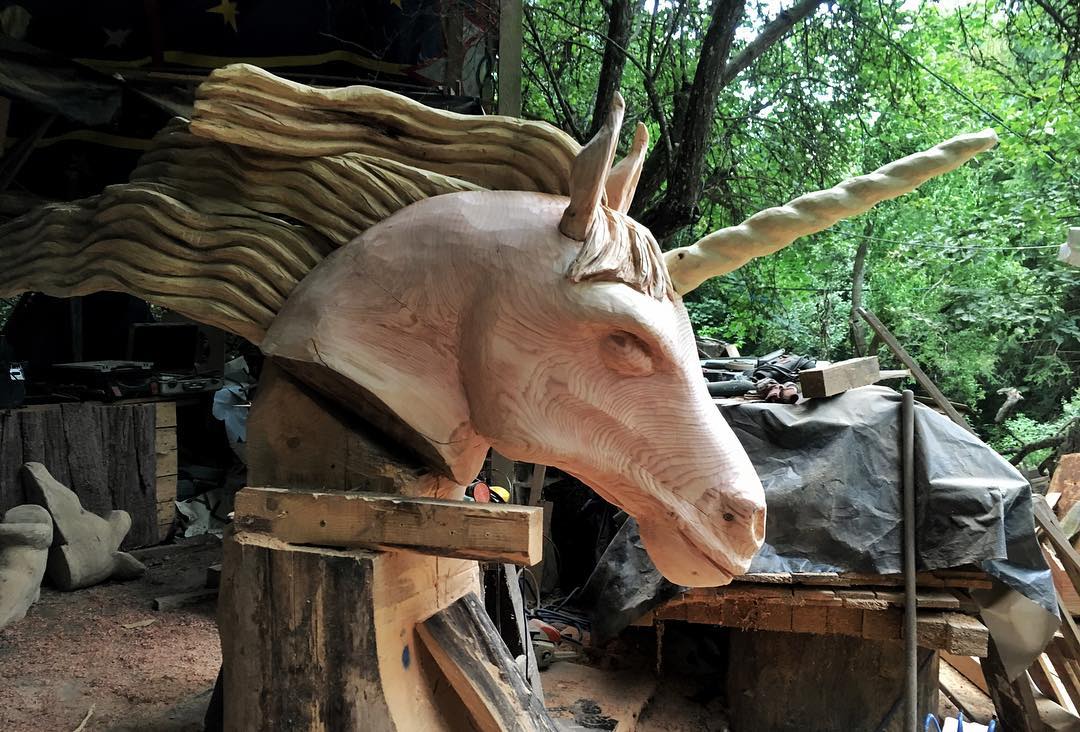
When I work on something like this, it usually starts with a tree trunk that has a diameter of 70 cm. That’s a nice format, and I’ll cut out a blank. So first of all a nice big block, which is nice straight. You can draw a head, for example. Then I work a lot with the motor saw to carve it out roughly and then I still have a lot of hand tools. So millers or grinders. Then everything goes quite fixed afterwards and that’s also the nice thing in comparison to it, if you would now only work with iron and hammer. It’s the way I’ve been used to carving, but it’s also very effective. This is of course really very nice, because then you can see a lot of things in the results. That’s just the fantastic thing about carving. Such a horse’s head, it’s finished after two days. So now for example with the unicorn head, there is a mane afterwards. That was more expensive then, but it was finished after four days. That’s really the beauty of this work, that you just peel something out of a thick tree trunk. And at the end you paint it nice.
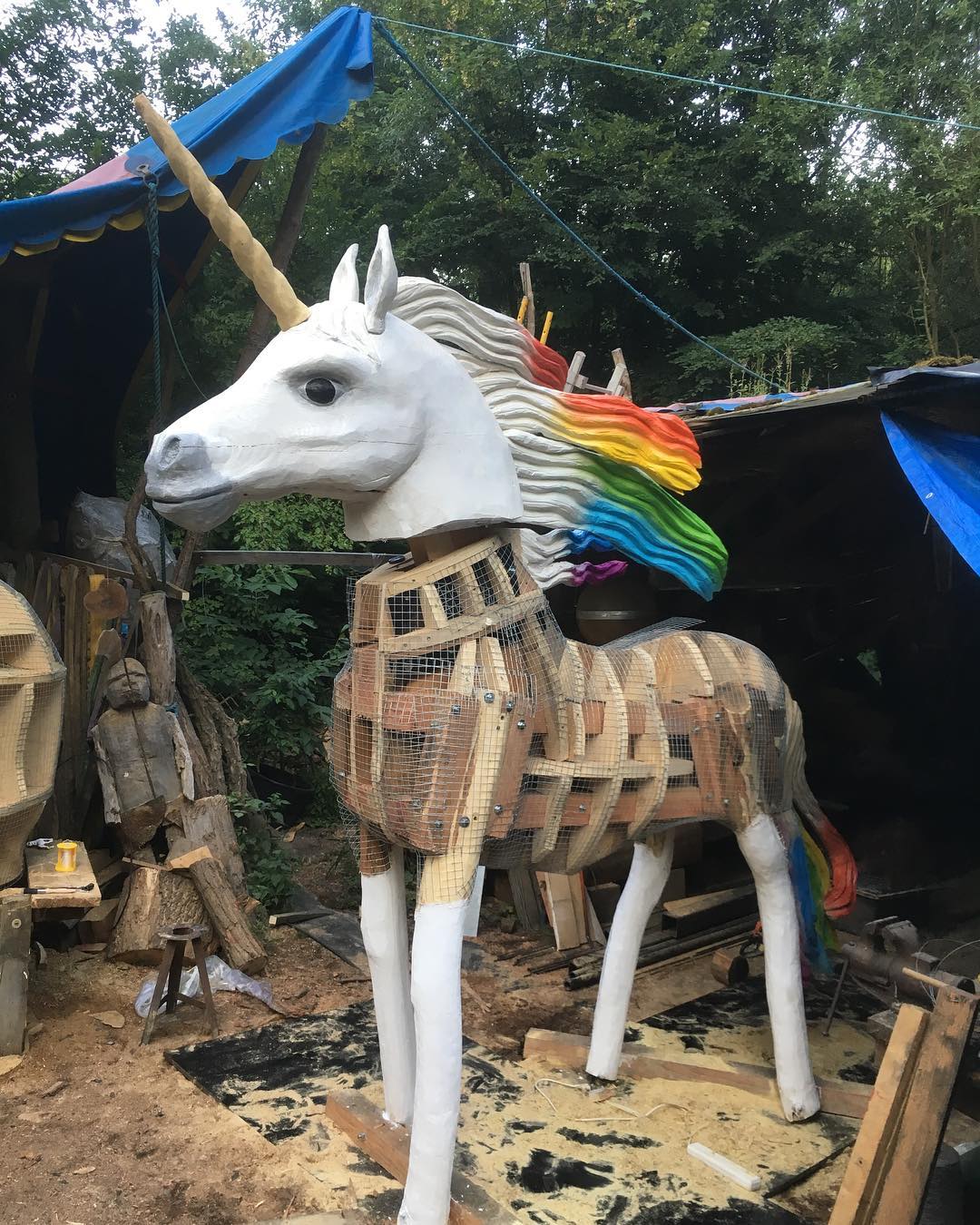
How many works are created for such an exhibition? That’s quite a few you’re doing there.
Yeah, so we usually have about ten to twelve objects we build each year. Partly with a production time of about three weeks per sculpture. That’s about the time it takes, because it’s very difficult to build larger sculptures like this. That’s so many parts and so many details. The workload then, of course, adds up. For the reason that I can always only be at the forest yard for three months and because I also have a family here in Berlin, where I have to be, that is always compensated with manpower. Then we’ll work five or four at my place at the forest yard. This is also very good, because there is often the opportunity to touch the other somewhere, because something is so heavy or if you have to rotate an object. It is really often very good, if you are too four times, because overall things are so heavy that you have to move the objects also with machines. Of course we don’t have to do everything by hand, but it’s the nature of things. So even if you have the little things. For example, a leg of a dinosaur that weighs 150 kilos, you just don’t want to have to carry it around by yourself. So it’s perfect if you have a slightly larger team when you build such large objects and sculptures.

Do you then assemble the individual parts on site or how does that work in the end with the transport?
We usually build the objects in such a way that they really fit into a truck. Also in segments. For example, if we make figures now, we build them into individual parts. Last year I built a DJ that was four meters tall. With table, with turntables and boxes. There it is then so that with such a figure the head is removable. Then the upper body is removable with the arms and the lower body then goes up to the hip. The things are then quite easy to build up and then just have to be put into each other. This is also important to make it workable, because the exhibition is also a travelling exhibition, which goes to a different place every time. This is how these eight exhibitions come together. That is why it is of course also important that it is well built and that the people who build and dismantle it can also make it logical and relatively easy.

Listeners who are interested in this, you can find more information on the website Waldwerft, the information can also be found below in the Infothek. There are also links to the pumpkin exhibition. Pit also has another website, so pitruge. de, and there are also great photographs. I thought it was really great too. There you have created subsections for countries, of which you have brought great photos during your travels, and you have also a section with portrait photography.
Well, I’m actually coming from photography and I’ve never stopped doing it, although I’m now making my living more or less through sculptures. But it has now given me the advantage that I now only photograph the things I want and I can still follow my free photo projects without having a strong commercial pressure. In any case, this is still an important matter for me too. Photography, then. Even though it is already very overrun and there are a ton of pictures. Still, it’s still important to me. For example, I have been working on a photo series for several years now. It’s about soap bubbles, which I basically portray. I depict big soap bubbles in the forest for example. So these are soap bubbles that are two or three meters tall. Or I associate that with people in the studio as well.

This is a very interesting project for me, because I also find that there is a lot of transparency, fragility and reflection in such a soap bubble. This has a total depth and I’m always totally fascinated that although I’ve been dealing with it for quite a long time, I’m now coming back to different results and also that I’m always making new insights. Like, for example, being somewhere in the middle of nature and making such a soap bubble, it becomes clear to you on one, how this air stream works. Because if I change my position once by ten meters and the soap bubble then flies completely elsewhere, then the soap bubble makes something visible, which you can not actually perceive at all. So that’s a small stream of air. If it’s really windy and the leaves are shaking, so I’m a sailor myself, then it’s clear that you can see that. But if it’s all fine and easy, you don’t get it at all. And the soap bubbles make it pretty visible. These are all so crazy circumstances that show up there.

What really goes through with you like a red thread and whatever comes up again and again is this theme and word “forest”. So also at the “Waldwerft” (“forest yard”) or in the photos with the frogs, I also found them great. Or the models, they were all in such a wood elf’s look with lots of leaves and nature elements.
Yes, that’s absolutely an issue. I lived in the woods for 15 years, in a forest house. So really without neighborhood in the immediate vicinity. In principle, the photo series with the animals was created there. The frogs that are depicted here are, in principle, all frogs that happened to me. So I either saw them outside the house or it was already so that when there was toad walk, that the toads just walk around there. And I’ve had it several times that a toad has jumped against the front door of my house over and over again and I was inside and heard that someone is knocking. Then I opened the door and then I see a toad sitting in front of the door. I took this as an occasion to take all this lurche in and take pictures of me on the red velvet couch. This is how this series actually came about. This has simply been a kind of encounter observation now with the amphibians. The one with the portraits, I continued later and made a new series about it. That was then so to speak recycling from plastic and with that I made clothes. A bit fashionable, but just out of any kind of packaging. Because you have to say, it just takes overhand and you could build yourself a completely new dress every day just with the garbage you have in your yellow bin. This is crazy.

Great, that’s upcycling! Interested people can not only look at your things on the internet, you even published a book, but it is mainly about the pumpkin exhibitions. You can also browse through it and find lots of information about your works.
Right. Last year, on the twentieth anniversary of my work for the pumpkin exhibition, I made a small book, which in principle takes a closer look at the development of the sculptures. So also where there are sculptures from each year and where there is a little explanation of how we do it and just a few more little stories. It is primarily about the pumpkin exhibitions. Then of course there are even some pumpkin recipes in it and that is actually quite a read for someone who is interested in the topic.

How about the future and next year, are there already dates or planned projects? Because I think even with Corona you can do such an exhibition because it’s usually all outdoors and there’s not a big problem with the distances between the visitors.
It is indeed like this: After the pumpkin exhibition is before the pumpkin exhibition. We also have our creative meeting pretty soon and I assume that we will first of all decide on a topic and then we will see what comes next year. This year the coronary has been produced a little less and I assume that all this will continue and that it will hopefully soon go up a little bit. So I can do something at Burning Man again. But overall, I’m a very confident person anyway. Somehow it goes on and on, but I hope that you can also look a little more relaxed into the future. I hope you can travel a little better and maybe see a little more people again. That would be very desirable.
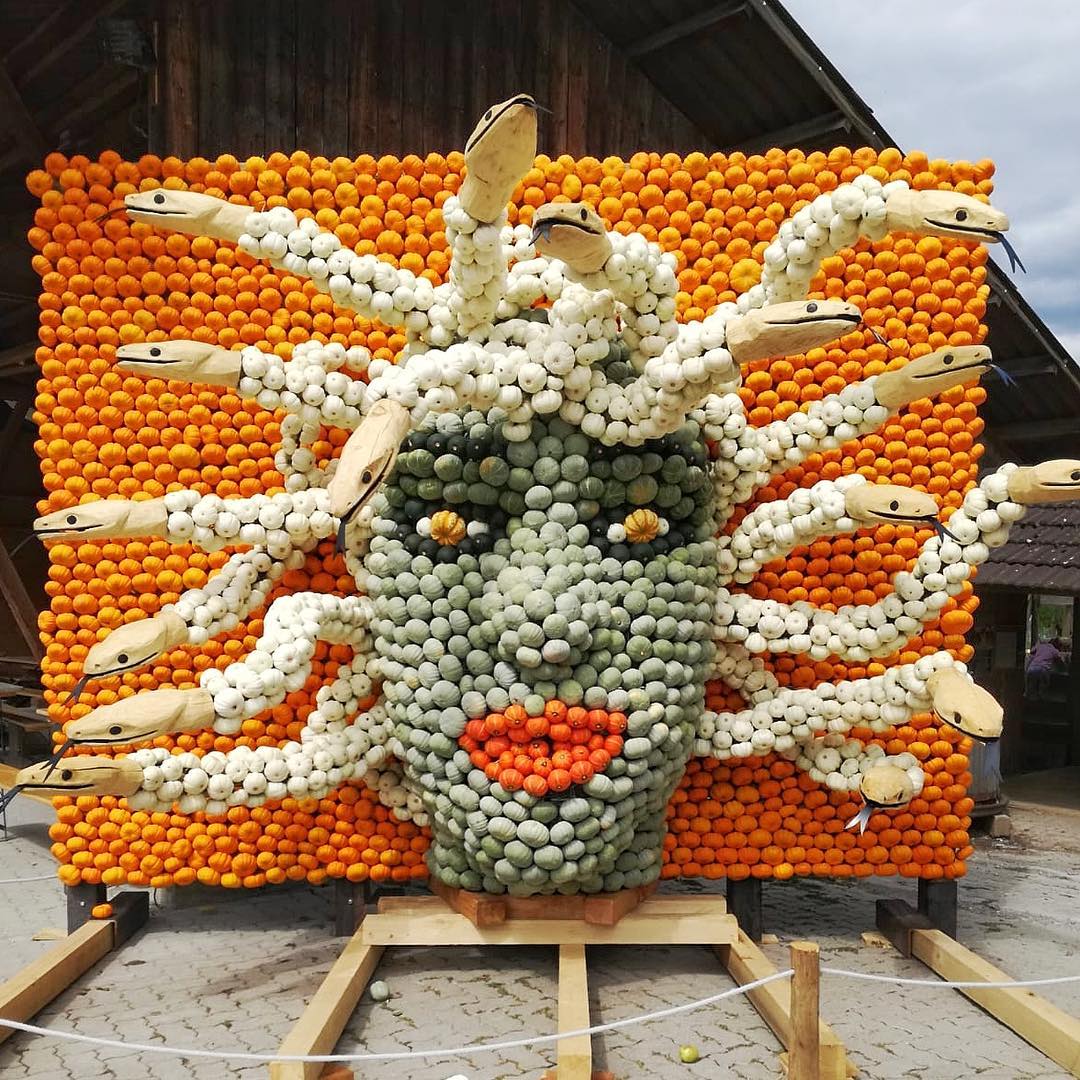
Yes, of course! The art and cultural scene is definitely suffering a lot at the moment.
Absolutely! So I live here in Berlin and it’s basically bad for a lot of people. It’s very bad. As an artist, I’m still very lucky that I’m actually in a business that was outside. Of course, it is also guaranteed that everyone who had such a pumpkin exhibition had to restrict himself this year. So there were spectator limits or in Ludwigsburg it was planned that the pumpkin exhibition runs until December. They built an illuminated path into the park a week before the Second Lockdown and there were some objects and the entire castle park illuminated. It came to the general rehearsal and then the next lockdown came shortly after. That was, of course, very tragic. But still, all the formats that take place outside are probably the alternative. There is also an exhibition about Helmut Newton with posters on the street.

I assume that’s really the format of doing outdoor exhibitions. This is perhaps also a bit of a bow to the conversation we had on Teufelsberg. The plot on Teufelsberg is of course totally suitable for this, because it is outside and I will definitely make an exhibition there next year with big flags. This is a project that I have already done several times during Burning Man. I printed photos on large fabrics and then presented them as flags. Now in particular, these were also pictures of soap bubbles, which of course fits very well. But I assume that and you have to adjust a little bit to it, because it is definitely not over in January. This will really take a while and for this reason you just have to look for new formats that just work now. The art must be on the urban space. Now is the time. Get out of the galleries and on the streets.
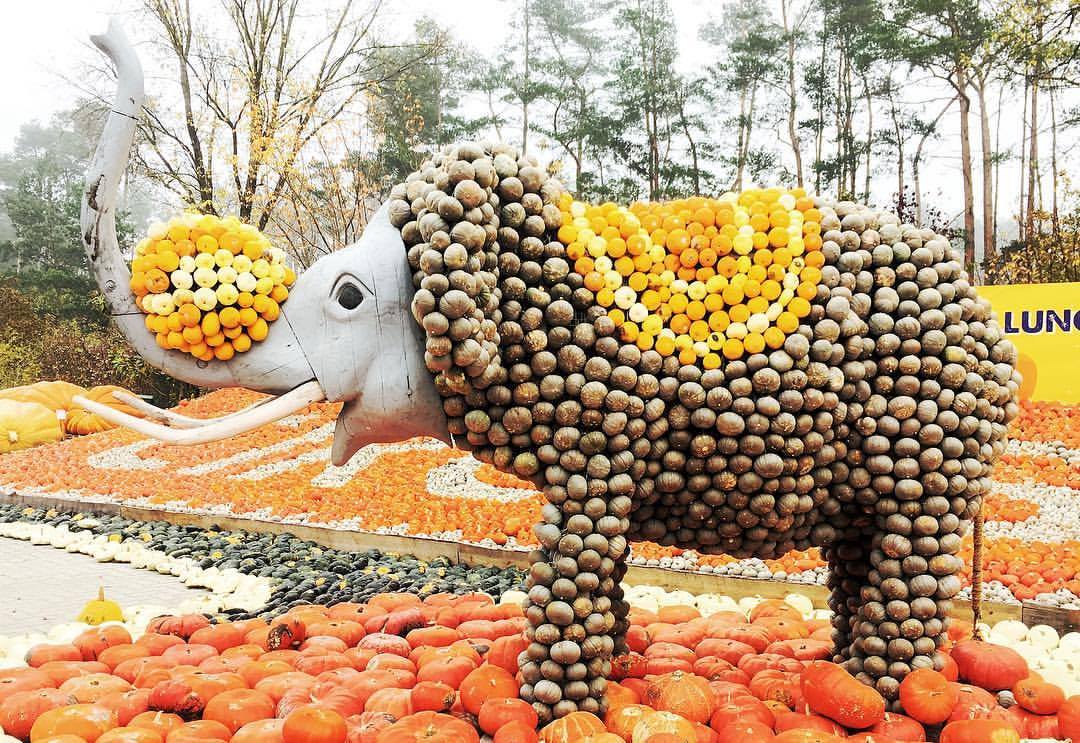
INFOTHEK
![]() Website: https://pitruge.de
Website: https://pitruge.de
![]() Website: https://waldwerft.de
Website: https://waldwerft.de
![]() Facebook: https://www.facebook.com/pit.ruge
Facebook: https://www.facebook.com/pit.ruge
![]() Facebook: https://www.facebook.com/WaldWerft
Facebook: https://www.facebook.com/WaldWerft
![]() Article Domecast: https://vagabundler.com/musicians/domecast
Article Domecast: https://vagabundler.com/musicians/domecast


